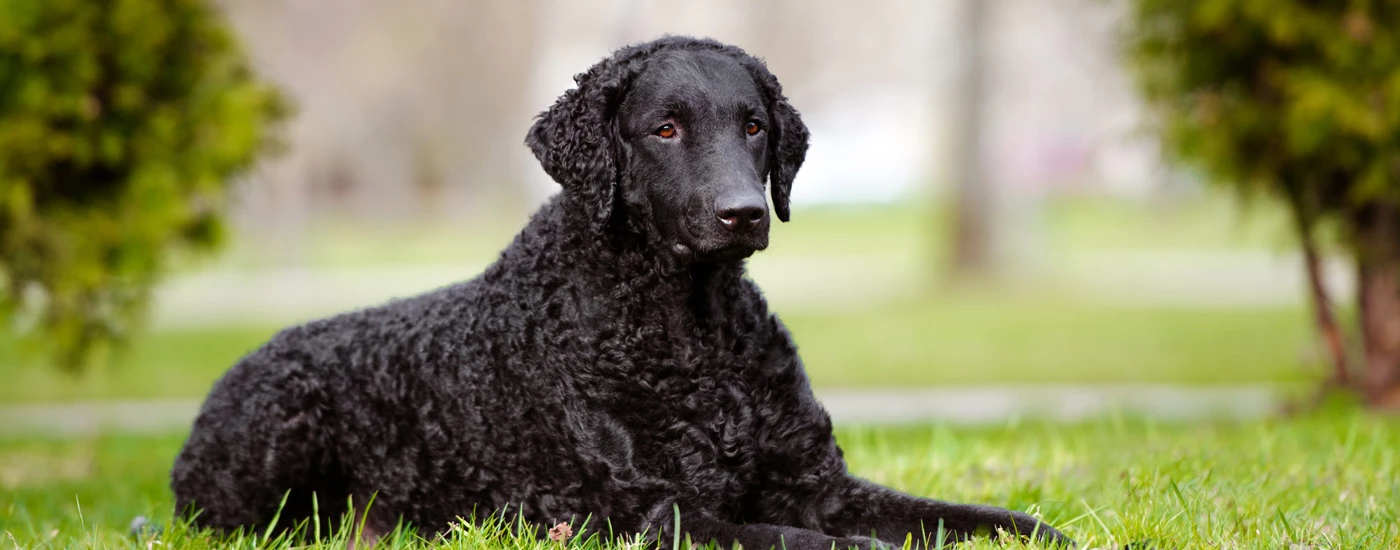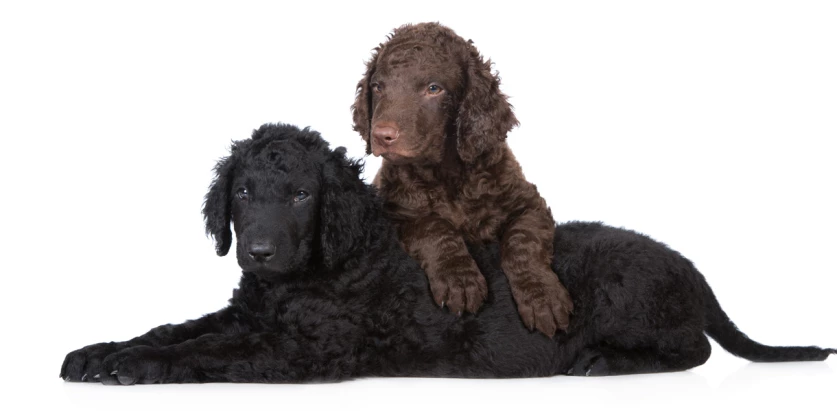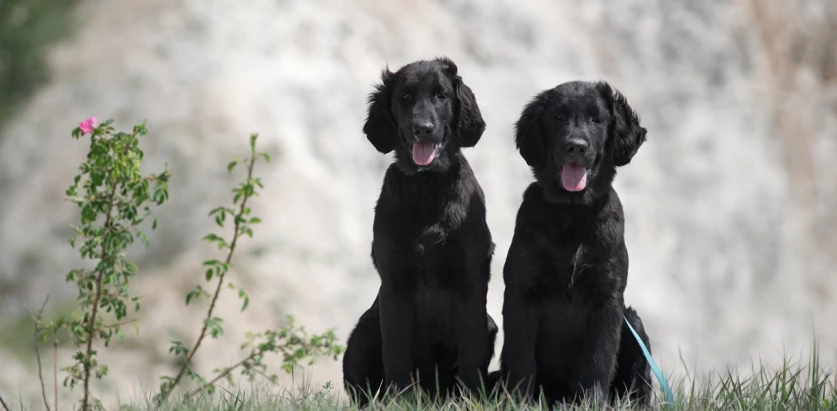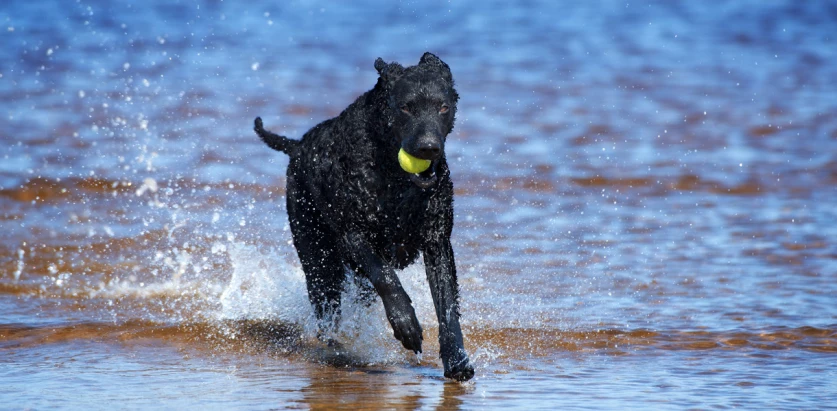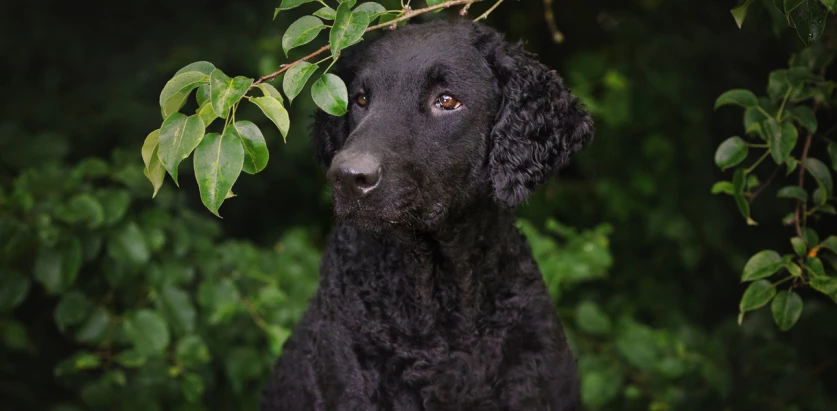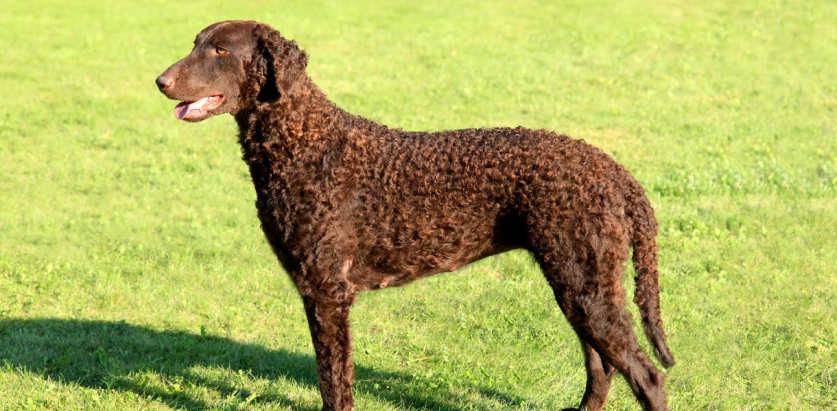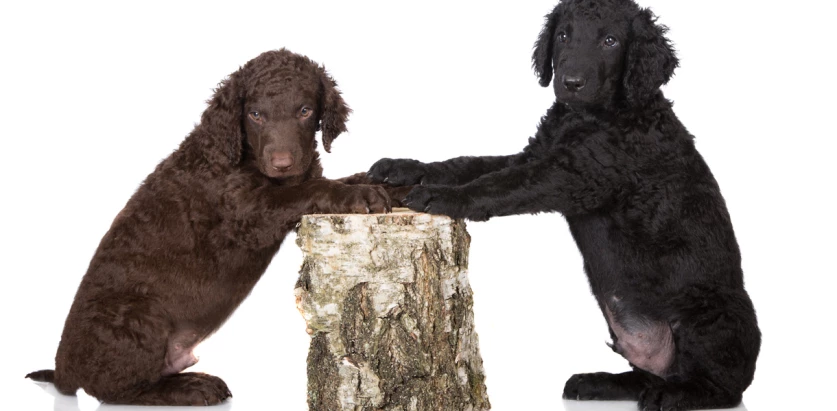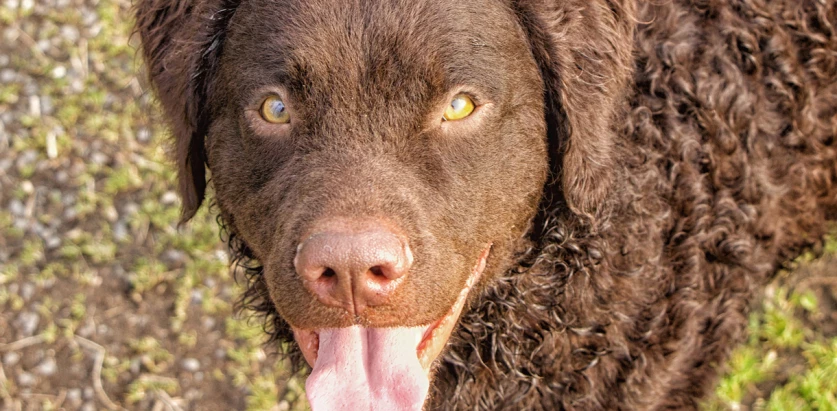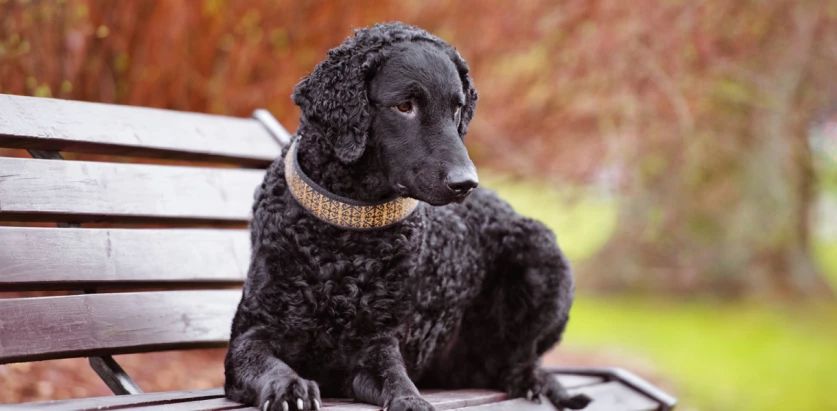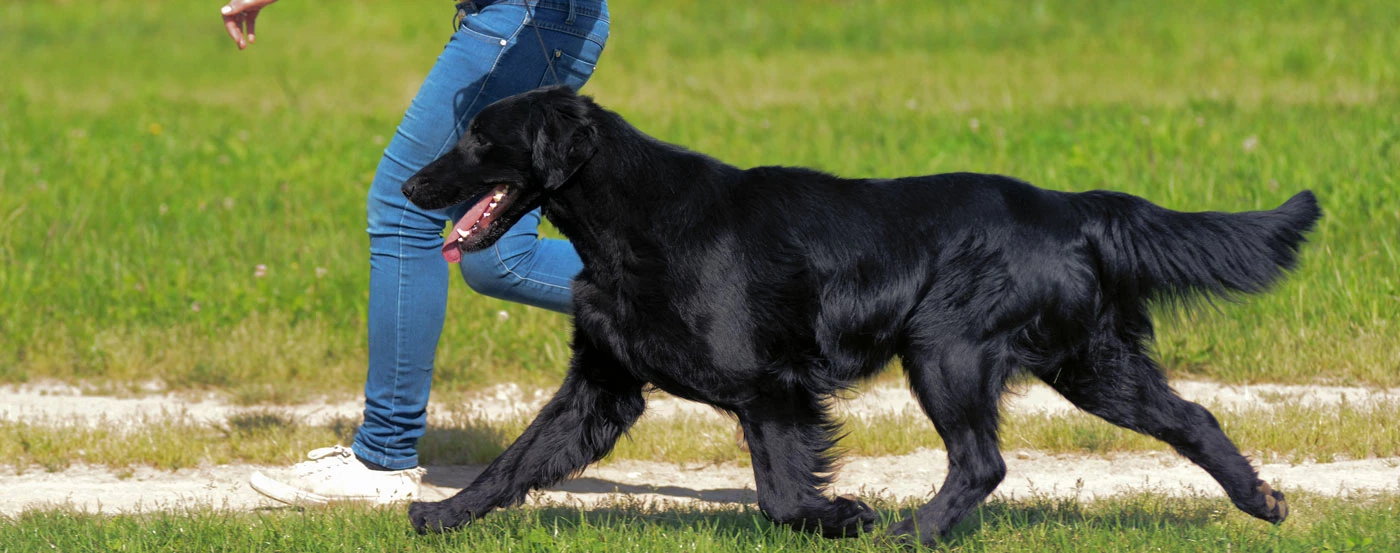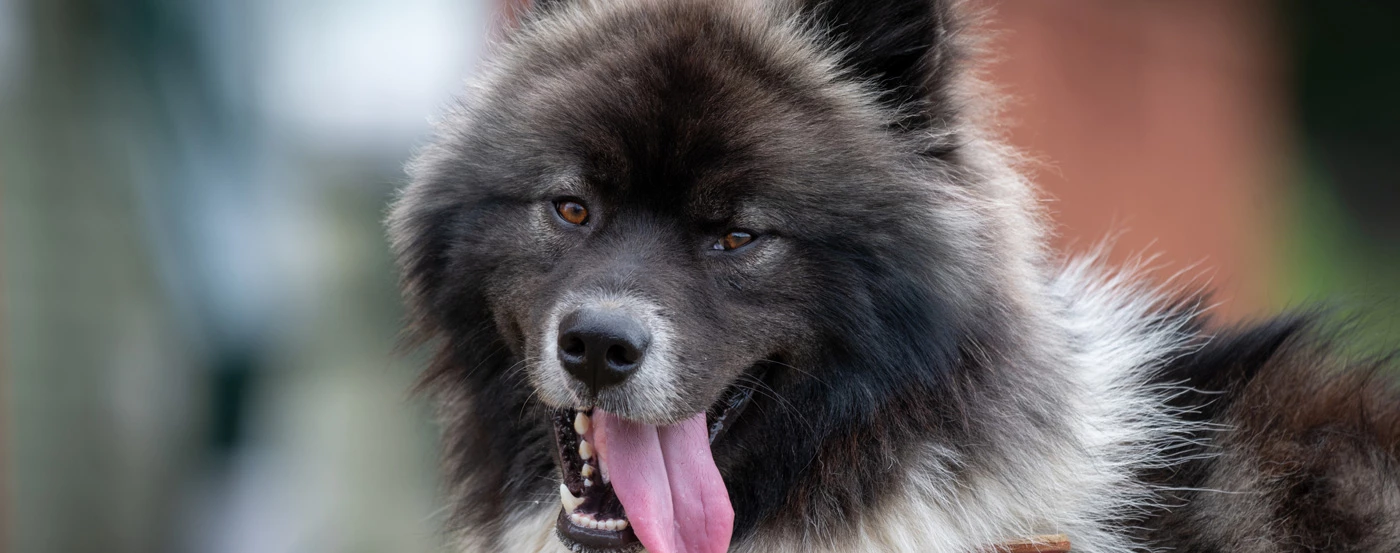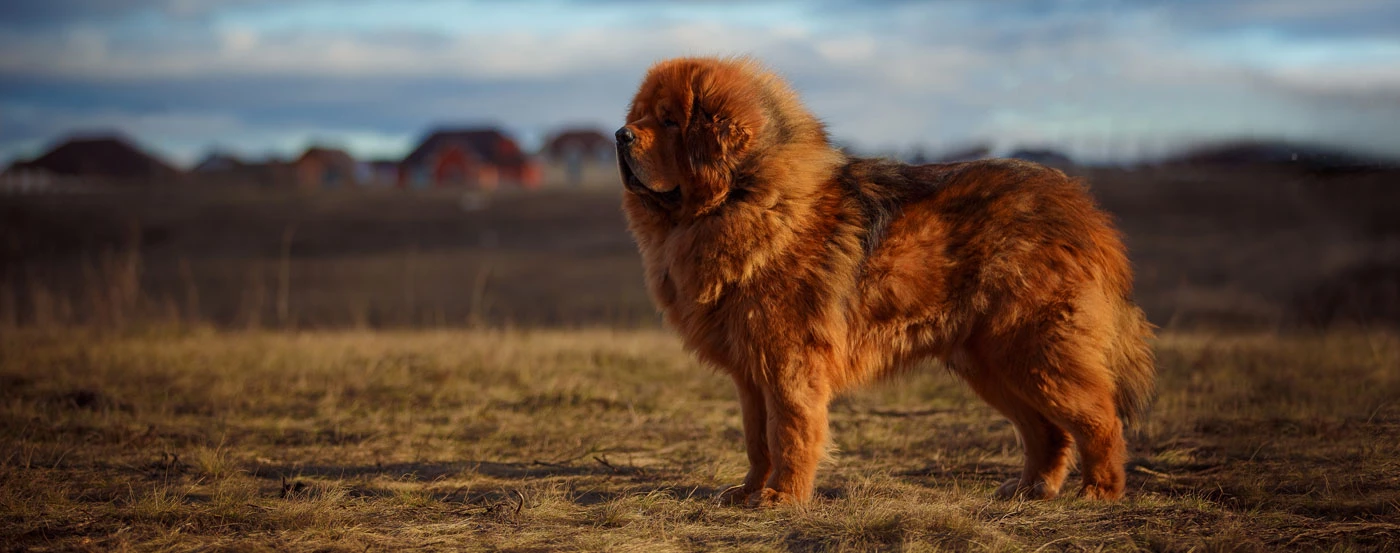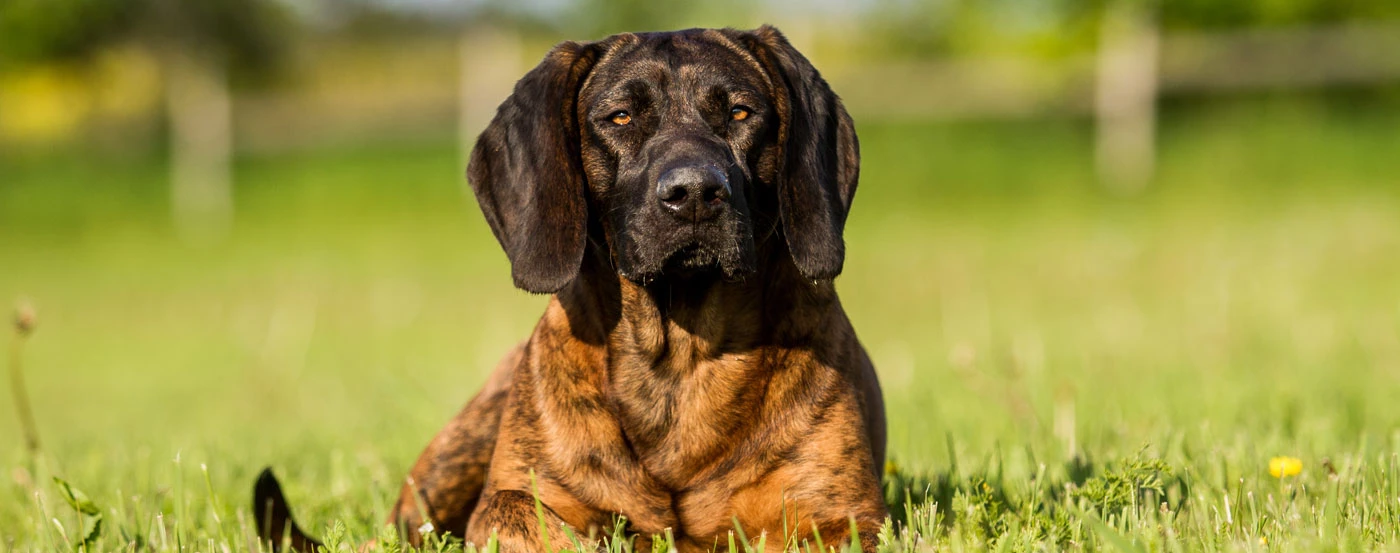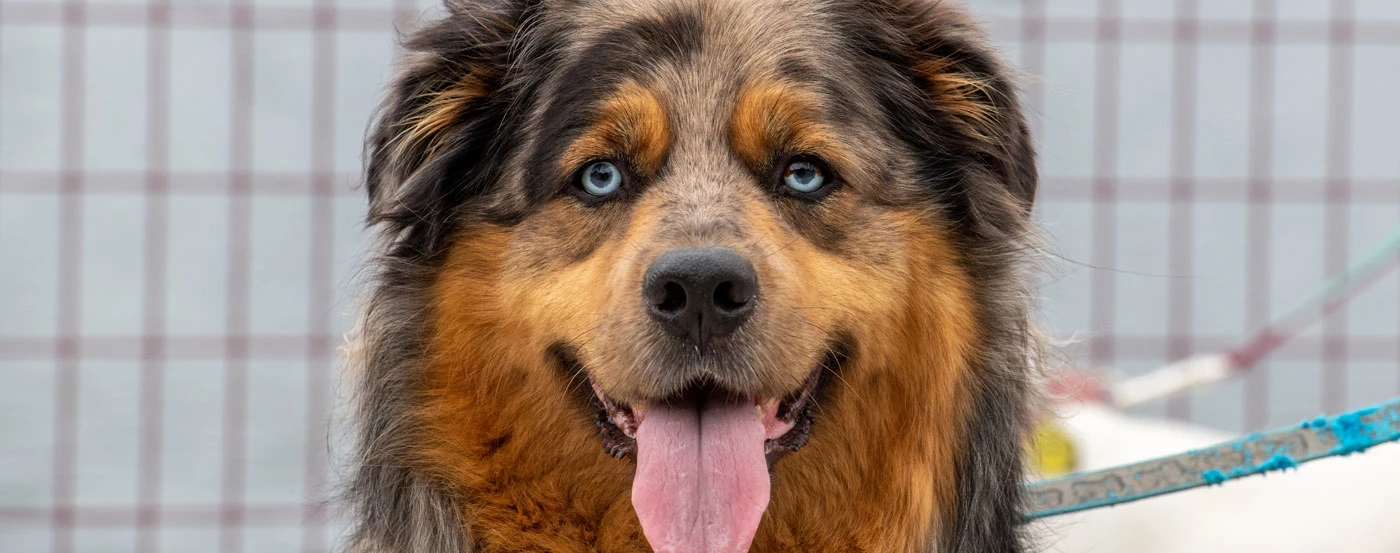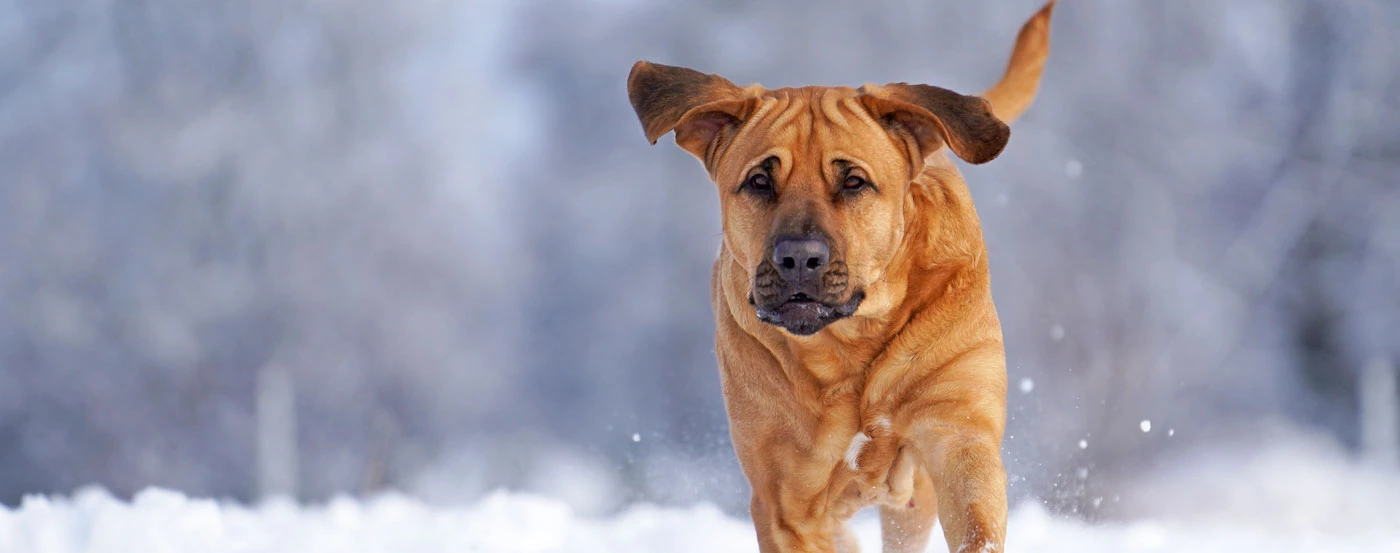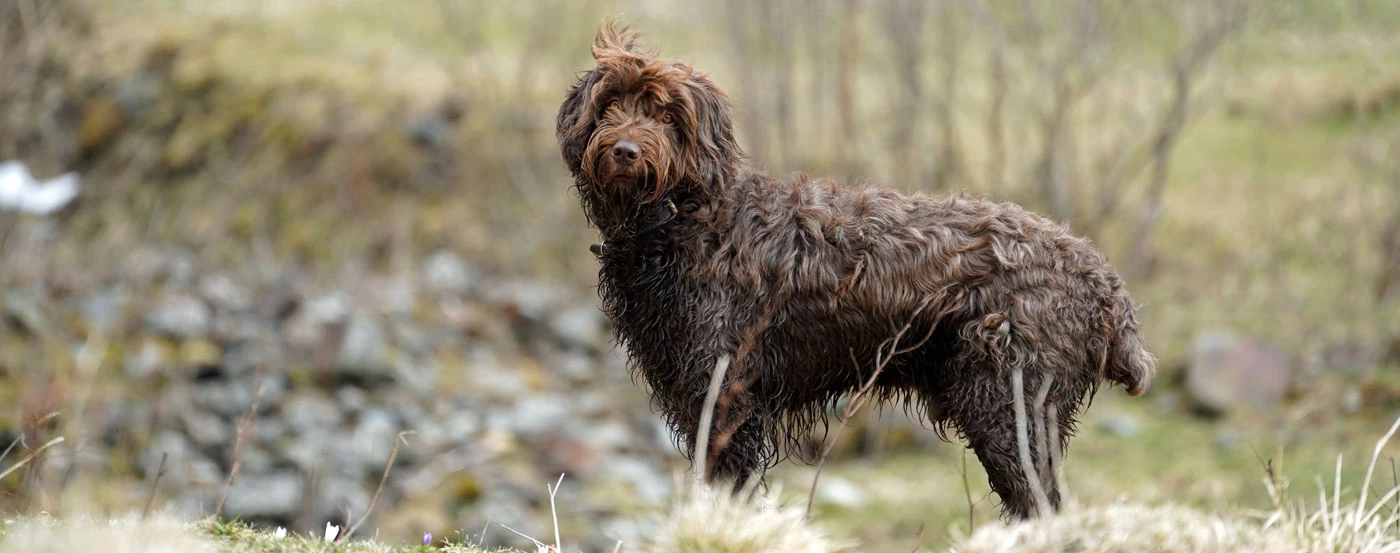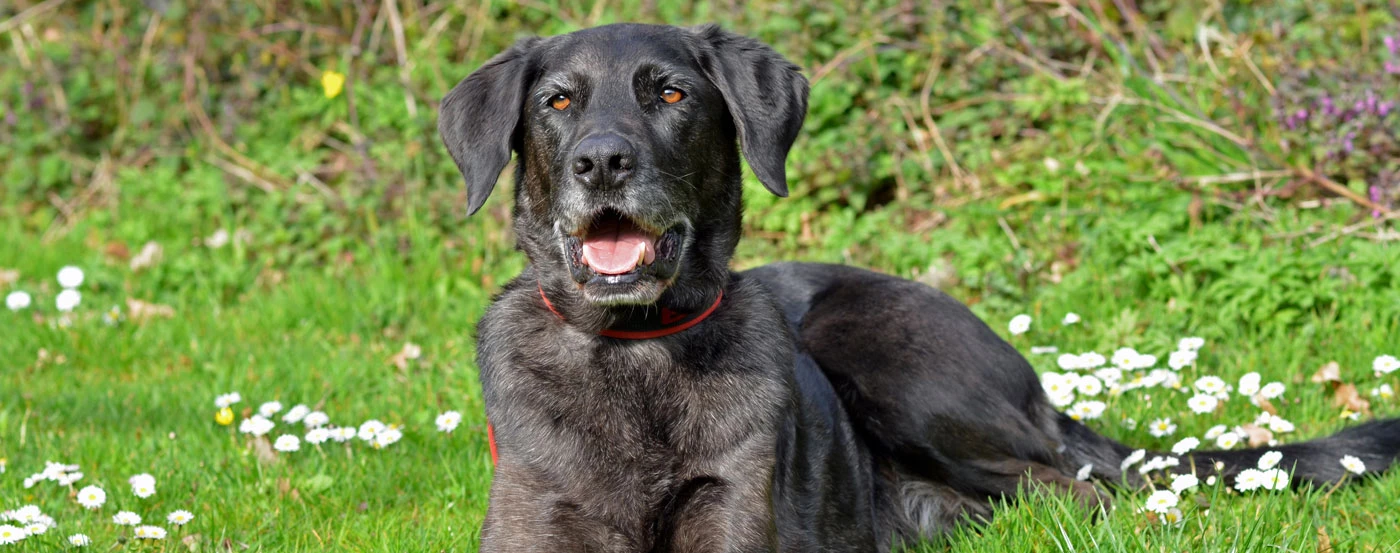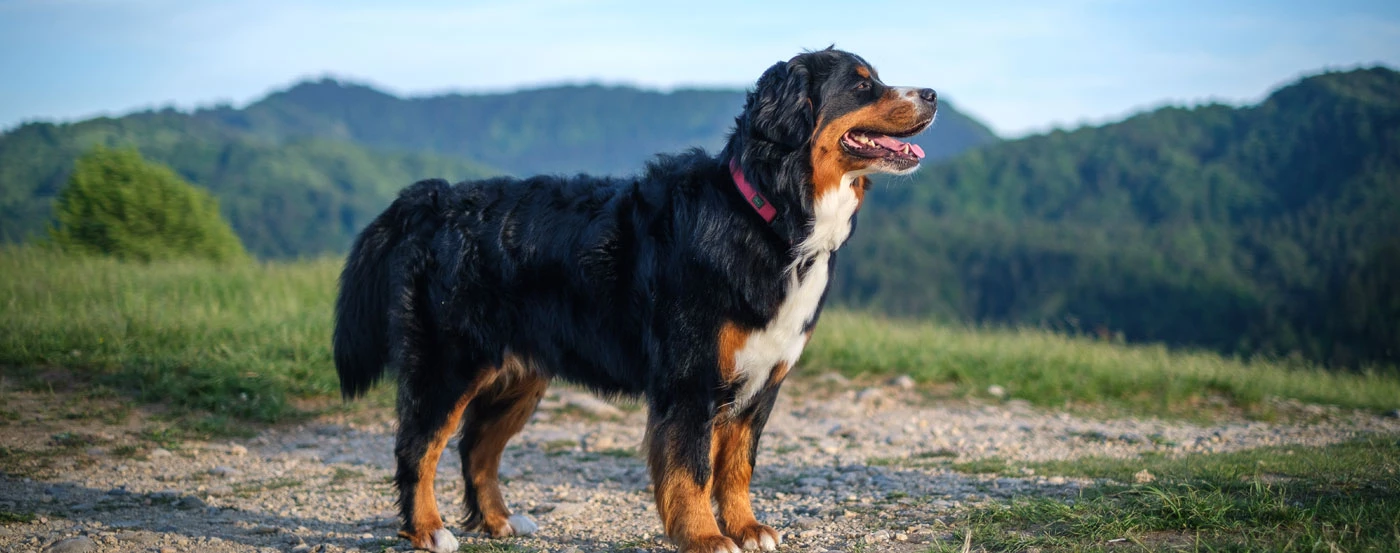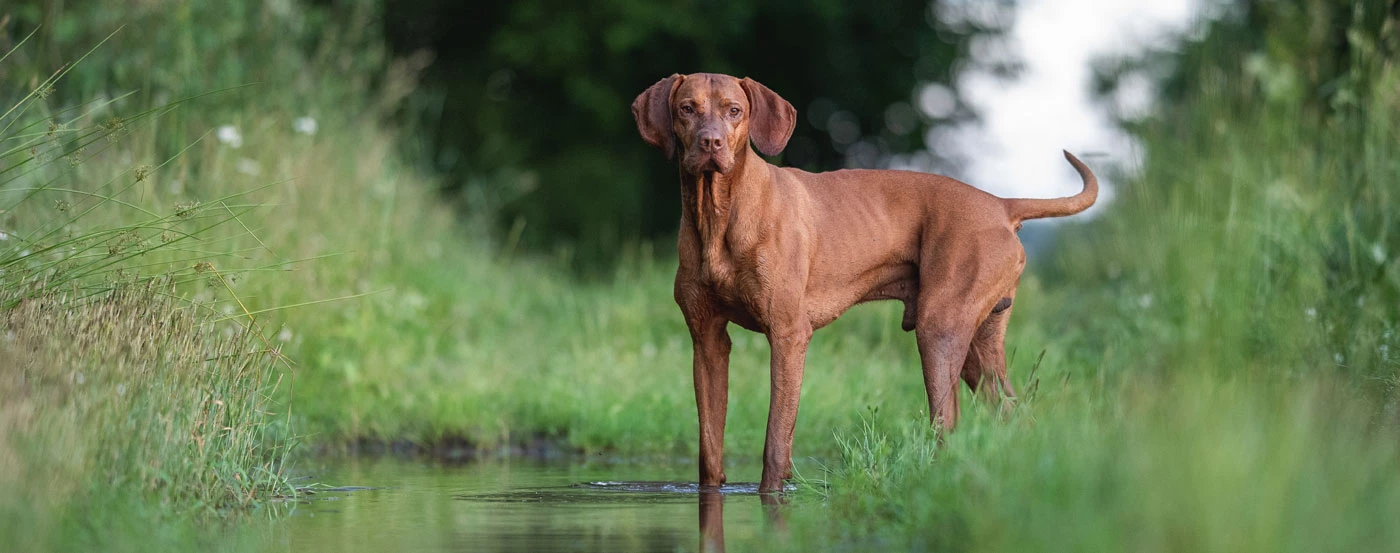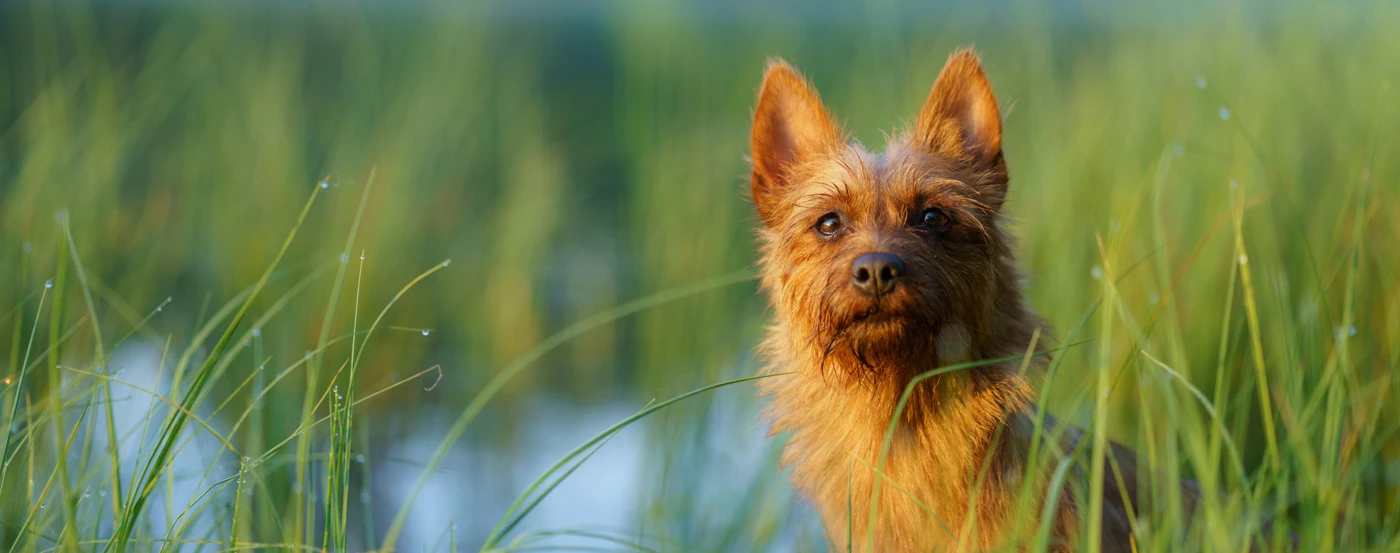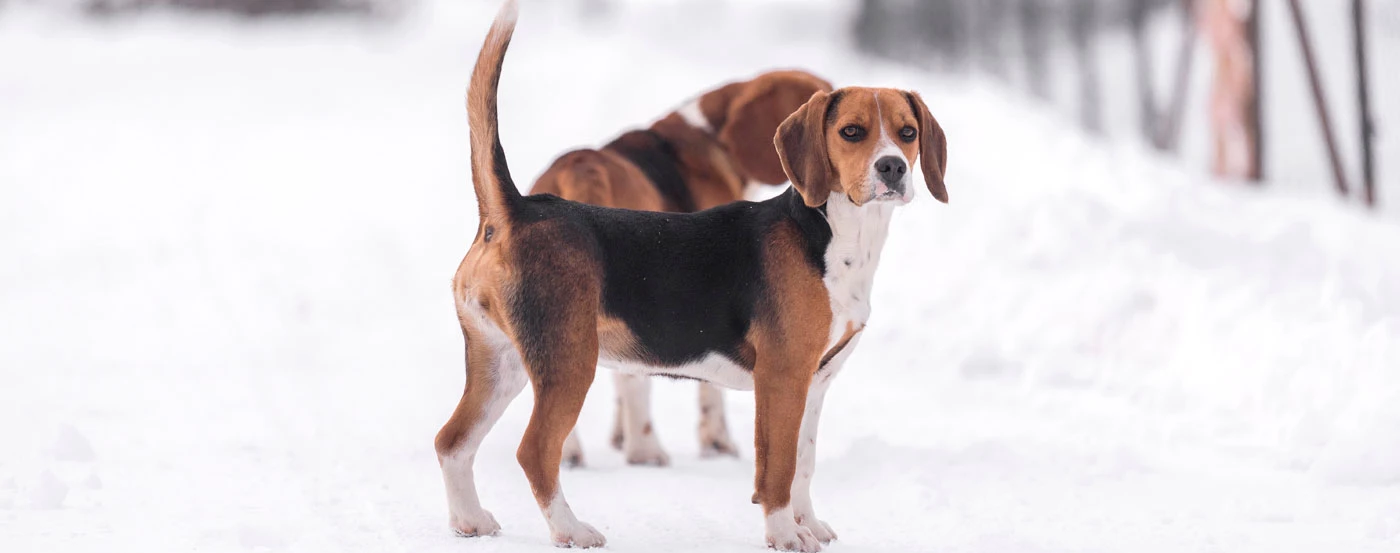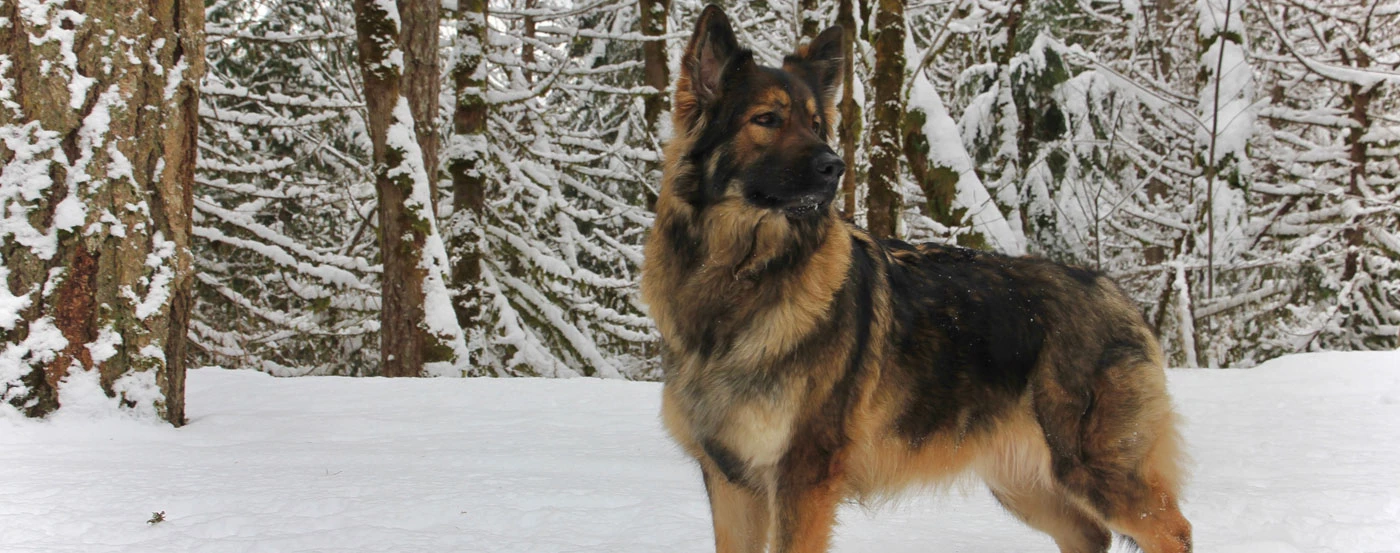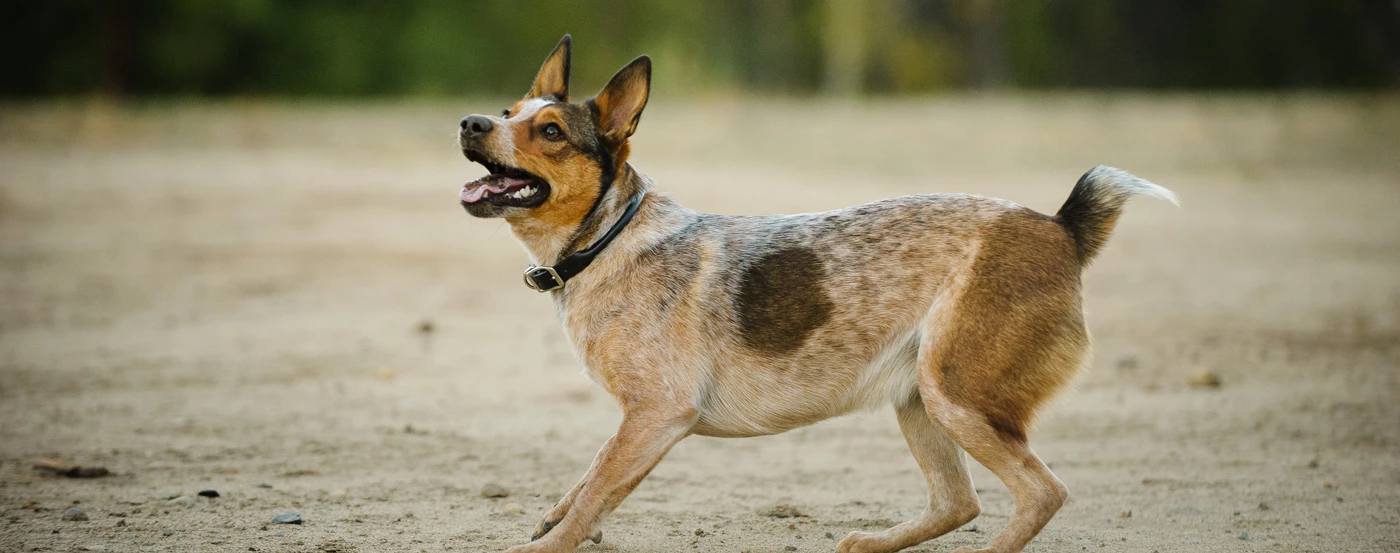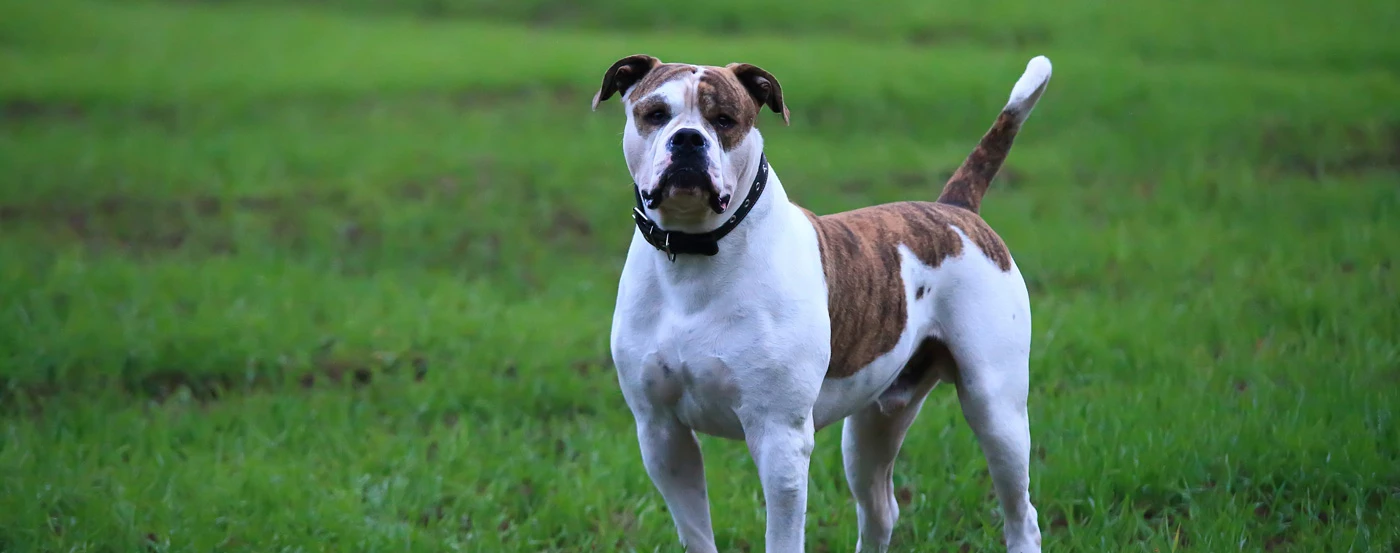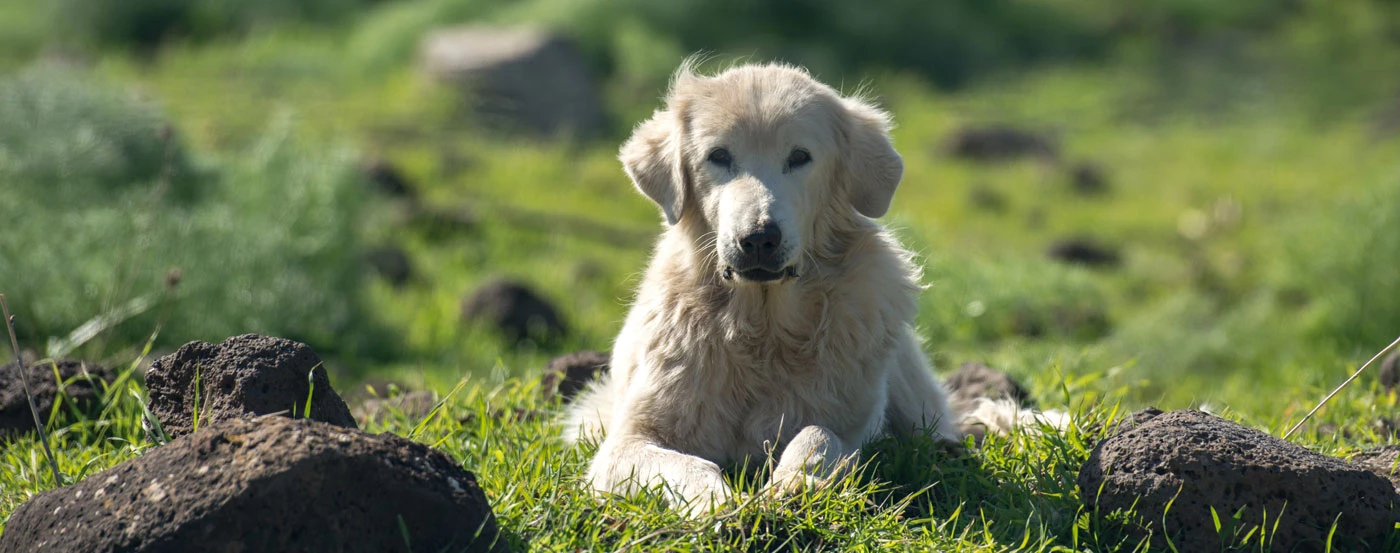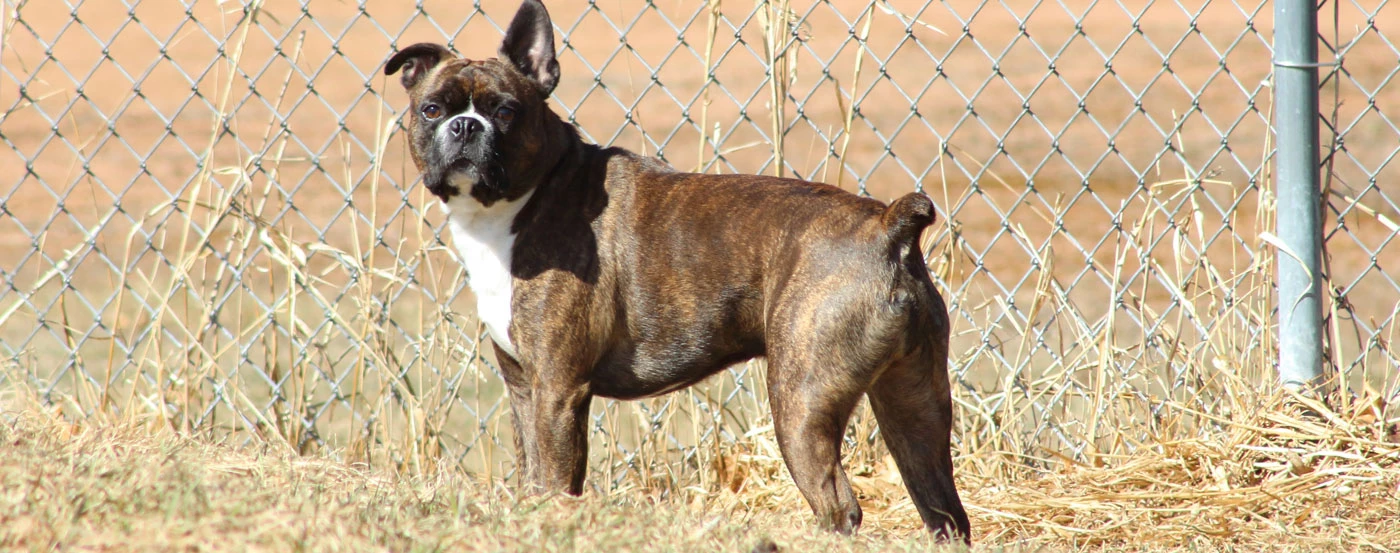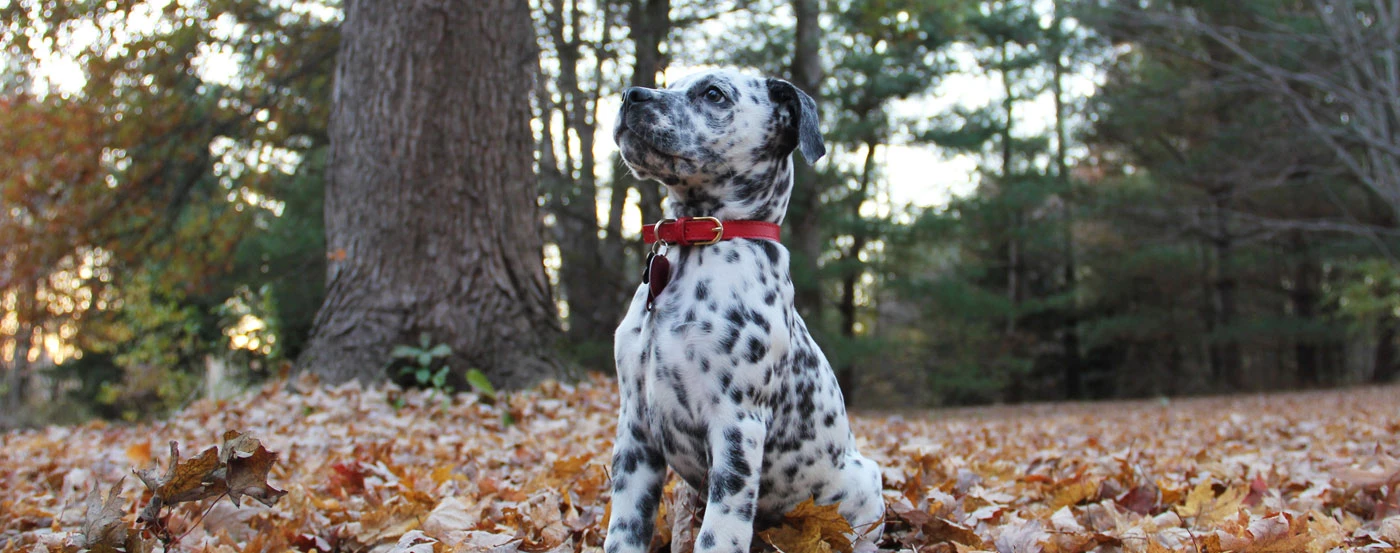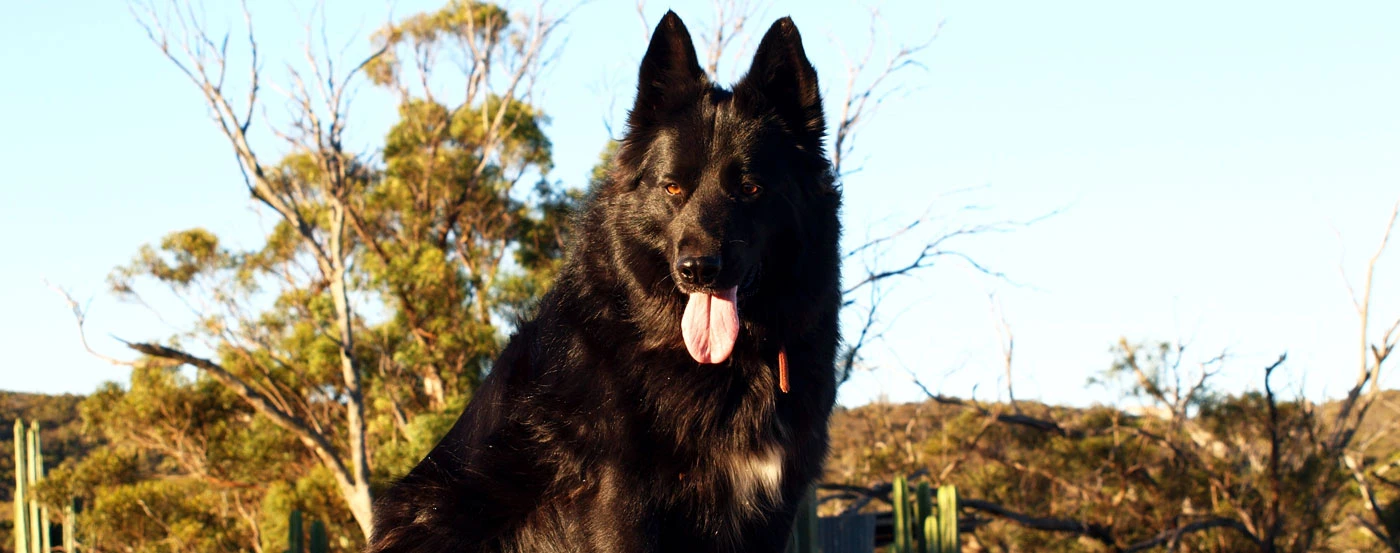About the Curly Coated Retriever
Grace and elegance are common descriptions of Curly-Coated Retrievers or Curly as they are loyal, rambunctious, and brilliant.
These dogs seemingly have found the fountain of youth as they never seem to run out of gas.
An adorable puppy that grows into a loyal family member, the Curly is genuinely a member of the clan and not simply a pet.
Curly Coated Retriever Gallery
What is the history & origin of the Curly Coated Retriever?
The Curly-Coated Retriever has an extensive history as they are not only among the oldest retriever breeds in existence, they are the oldest retriever breed in existence.
They are the first breed of dog to be classified as a retriever breed and to be exhibited in dog shows.
The commonly accepted linage of Curly-Coated Retrievers is that they are a descendant of multiple other retrievers, including:
Labrador Retriever
Irish Water Spaniel
English Water Dog (or English Water Spaniel / Old English Water Dog)
Retrieving Setter
Poodle
St. John’s, Newfoundland
Their origins date to the early 19th century in the United Kingdom, and they were originally bred as sporting dogs, specifically as hunting dogs and English gamekeepers. They are still purebred in the United Kingdom to this day.
They have a recorded presence in Australia as far back as 1880.
They're a recognized breed by the American Kennel Club, the Kennel Club, and various national breeder clubs.
Who are Curly Coated Retriever dogs best for?
The Curly is a perfect combination of the guard dog and the family dog.
A very energetic dog that is very good with kids, including very small children. They are loyal to the end and protective of family and friends. They absolutely love the outdoors and do require space to run and get enough exercise. They are not a good choice for apartment living.
Like other retriever breeds, they do require a bit of mental stimulation and can get loud when playing or left alone.
They are very affectionate and are also good additions to families that have other dogs, especially other retrievers or other pets, such as cats.
They make a great addition to any home, especially an active family.
How much grooming does a Curly Coated Retriever need?
While they may look high-maintenance, they really aren't. Their entire coat is curly; only the face is not. But, their crisp curls are natural, so don't worry about sharing the curling wand.
They only require the occasional bath. Simply, you only need to brush them regularly. Dry brushing can make their oily coat frizzy, so you should slightly dampen the brush or spritz their coat with water.
They are moderate shedders, and females shed the most. Most of their shedding is primarily a two-time-a-year event, though it can be a lot of fur during those episodes! It is important to note that the amount they shed is influenced by the climate they live in.
The most high-maintenance part of a Curly is their nails. Their nails grow fast and durable, but they need to be clipped regularly. If not, they will reach overgrowth rapidly along with other issues such as splitting and cracking.
It would help if you brushed their teeth on a regular schedule as well as checked their ears for wax. They can develop excess debris and wax buildup.
Do Curly Coated Retriever bark much?
Yes, these guys are talkers, and they don't understand the concept of using their inside voice. They love to bark when they are playing, and they love to bark when they are lonely or simply alone. If you have other retrievers, they will hold meetings and argue.
Do Curly Coated Retriever bite?
This is the thing about Curly-Coated Retrievers. They are not aggressive, but they can be. With that said, knowing when to be is steeped into their DNA.
As a family dog, especially a dog that has been raised alongside kids, any biting issue is rare. Keep in mind that all puppers bite and nip as a form of play. With that said, if someone (including a parent) were to act violently toward the child, the Curly will protect the child. There is no question about that.
Bite inhibition training is always recommended for a puppy. But, human behavior tends to be the controlling factor in biting cases.
What is the temperament & personality of a Curly Coated Retriever?
It cannot be understated, but the Curly is an active dog with a great demeanor and loves company. A good comparison is Siberian Huskies.
These dogs are safe family members but have extensive physical needs in regards to space and activity time.
They are very independent-minded dogs, meaning they have a mind of their own. They are obedient unless having an enlightened moment and think they know better, such as when you say that is enough time at the dog park for today.
What is the weight & size of a Curly Coated Retriever?
Make no mistake about it; this is a big doggo.
The size of an adult dog is:
Males average:
27 to 45 kg
63.5 to 69 cm
Females average:
27 to 43 kg
61 cm
How much training does a Curly Coated Retriever need?
Curly-Coated Retrievers are the perfect dog for training. They are amenable to training and relatively easy to train. Whether it is for dog sports, hunting, or security, they are very trainable dogs. A Curly-Coated Retriever club is a great place to start with the training process.
Due to the fact, that they are so trainable, they are common to see in dog shows.
They require a firm owner who can keep them focused and disciplined. Remember, they still think they are a puppy until they are three years of age. That is 21 in dog years.
What are some of the most common health issues for a Curly Coated Retriever?
Unfortunately, these dogs do suffer from an extensive list of health problems, which include:
Hip Dysplasia
Elbow Dysplasia
Entropion
Persistent Pupillary Membranes (PPM)
Progressive Retinal Atrophy (PRA)
Retinal Dysplasia
Hemangiosarcoma
Pattern Baldness
Lymphosarcoma
Adenocarcinoma
Ectropion
Glycogen Storage Disease (GSD)
Gastric Dilatation-volvulus (Bloat)
Fibrosarcoma
Melanoma
Osteosarcoma
Distichiasis
Mast Cell Tumors
What is the lifespan of a Curly Coated Retriever?
The typical life span of a Curly-Coated Retriever is 10 to 12 human years or reaching the ripe old age of 70 to 84 years old in dog years.
How much should you feed a Curly Coated Retriever?
It is best to keep the dog on a feeding schedule. You should feed them twice a day and roughly 2 cups of food at each meal. And, a good boy always deserves a biscuit.
What is the price of a Curly Coated Retriever in Australia?
In Australia, the Curly-Coated Retriever can be bought as a purebred or as a rescue.
A pet (a dog without any papers) averages around AUD 700.
For a show dog with a certified pedigree, this varies from breeder to breeder but can be in excess of AUD 1,400 for a Curly-Coated Retriever puppy.
Pros
- Athletic and energetic
- Friendly nature
- Steady and dependable
Cons
- Mouthiness
- Seasonal shedding
- Vigorous exercise requirements
